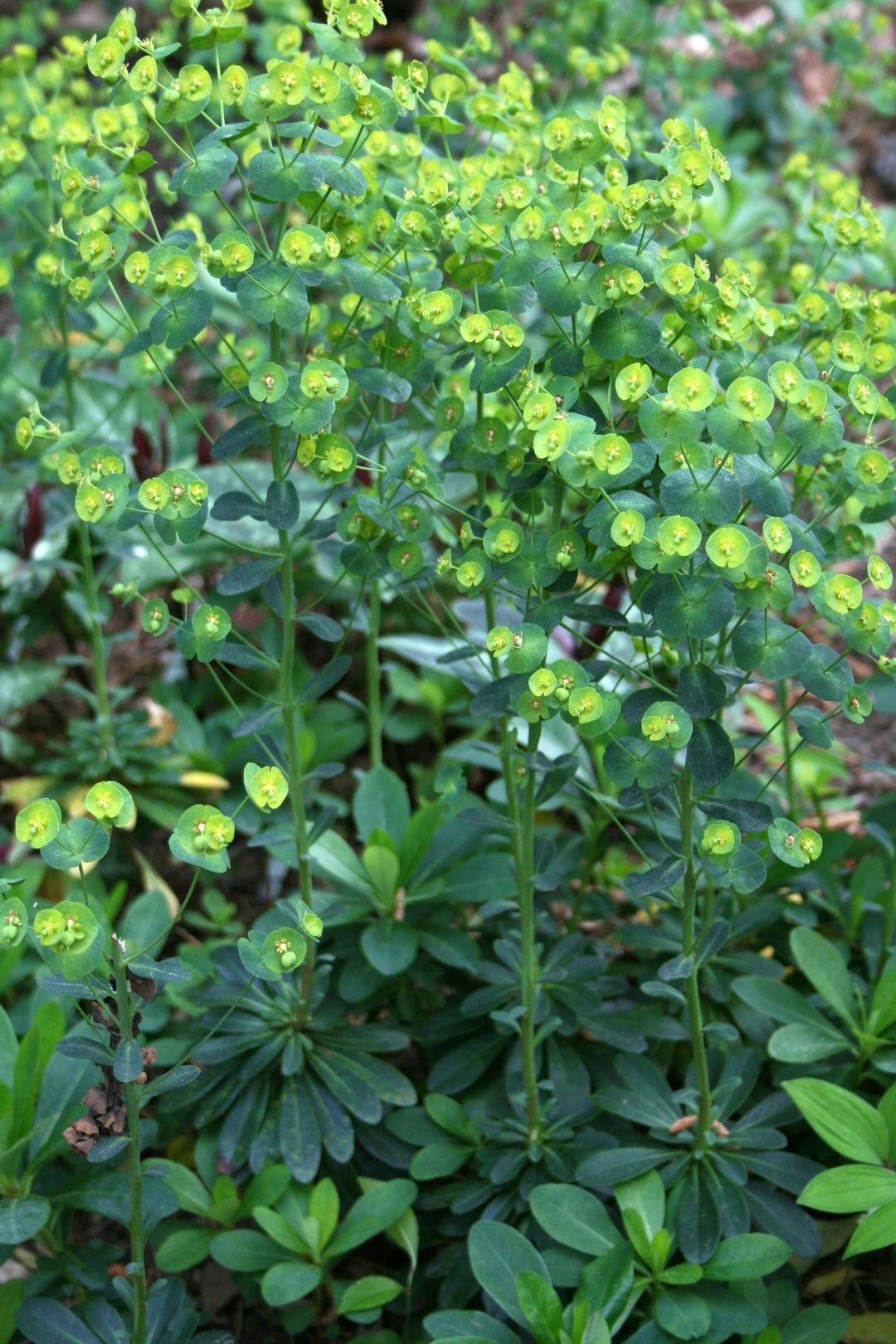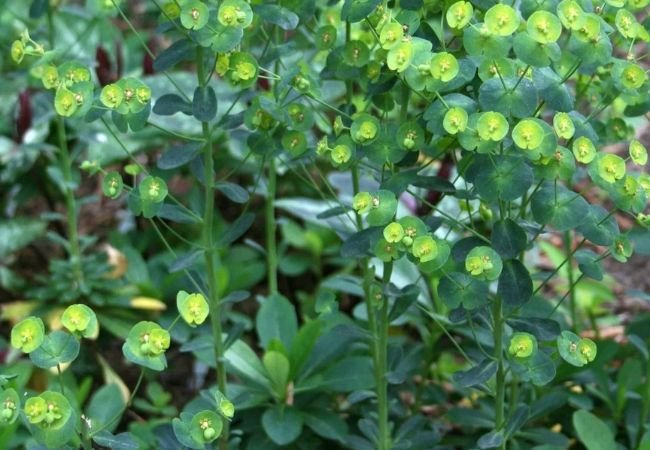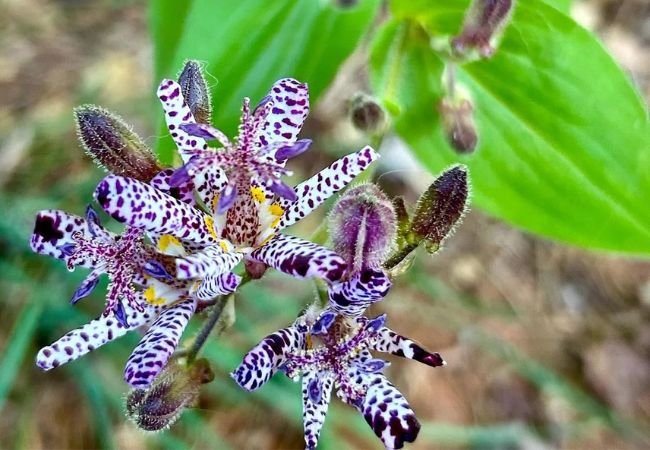Explore the diverse world of Spurges flower. Learn about their unique characteristics, care tips, and garden uses. Ideal for gardeners seeking drought-tolerant and low-maintenance plants with interesting foliage and blooms.
Spurges, belonging to the genus Euphorbia, are a large and diverse group of plants that offer gardeners a wide range of options for both foliage and flowers. From ground covers to tall perennials, spurges can add interesting texture and color to any garden. In this article, we’ll delve into the world of spurges, exploring their characteristics, care, and unique features.
Here’s an easy-to-understand chart for Spurges:
| Attribute | Details |
|---|---|
| Botanical Name | Euphorbia spp. |
| Common Name | Spurges |
| Plant Zone | 4-11 (varies by species) |
| Sun Exposure | Full Sun to Partial Shade |
| Soil Type | Well-drained soil, tolerates poor soil |
| Watering | Low to moderate, drought-tolerant |
| Growth Habit | Herbaceous perennial, shrub, or annual (varies by species) |
| Height/Spread | 1-3 feet tall, 1-2 feet wide (varies by species) |
| Special Features | Unique, colorful bracts; low maintenance; drought-tolerant; deer-resistant; attracts pollinators; some species have a milky sap that can be irritating |
What are Spurge Flowers?

Spurges are members of the Euphorbiaceae family, which includes over 2,000 species. What many people consider the “flowers” of spurges are actually specialized leaves called bracts, which surround the true, usually inconspicuous flowers.
Some popular types of spurges include:
- Euphorbia characias (Mediterranean Spurge)
- Euphorbia myrsinites (Myrtle Spurge)
- Euphorbia polychroma (Cushion Spurge)
The United States Department of Agriculture provides detailed information about the Euphorbia genus.
Growing Spurges
Spurges are generally easy to grow and care for:
- Sunlight: Most prefer full sun, though some can tolerate partial shade.
- Soil: Well-draining soil is crucial. Many spurges tolerate poor soil.
- Planting: Plant in spring or fall, spacing according to the specific variety’s needs.
- Water: Once established, most spurges are drought-tolerant.
- Hardiness: Varies widely depending on the species, but many are hardy in USDA zones 5-9.
The Royal Horticultural Society offers comprehensive growing advice for various Euphorbia species.
Caring for Spurges
To keep your spurges healthy and thriving:
- Prune dead or damaged stems in early spring.
- Wear gloves when handling spurges, as their sap can be irritating to skin and eyes.
- Divide clump-forming spurges every few years to maintain vigor.
- Watch for pests like aphids and spider mites, though spurges are generally pest-resistant.
The University of California Agriculture and Natural Resources provides information on pest management that can be applied to spurges.
Uses of Spurges in the Garden
Spurges have several uses in landscaping:
- Ground Cover: Low-growing varieties make excellent ground covers.
- Drought-Tolerant Gardens: Their water-efficient nature makes them ideal for xeriscaping.
- Architectural Interest: Taller varieties can provide structure and vertical interest.
- Rock Gardens: Many small spurges are perfect for rock gardens.
The Lady Bird Johnson Wildflower Center offers information on native Euphorbia species and their uses in natural landscapes.
Interesting Facts About Spurges
Did you know?
- The name “spurge” comes from the Old French “espurge,” meaning “to purge,” referring to the plant’s use as a purgative in medieval medicine.
- Many spurges produce a milky sap that can be irritating or toxic.
- Some spurges are used in the production of rubber and certain types of oil.
- Euphorbia pulcherrima, better known as the poinsettia, is a member of the spurge family.
The Smithsonian Gardens often provides interesting insights into various plants and their cultural significance.
Ecological Benefits of Spurges
Spurges offer several ecological benefits:
- Drought Resistance: Their water-efficient nature makes them valuable in dry climates.
- Erosion Control: Many species have deep root systems that help prevent soil erosion.
- Wildlife Support: Some species provide food and habitat for various insects and birds.
The National Wildlife Federation explains the benefits of using plants adapted to local conditions.
Spurges are versatile and interesting plants that can add unique textures and forms to any garden. Their low maintenance requirements, drought tolerance, and diverse growth habits make them valuable additions to a wide range of garden styles. Whether you’re looking for a ground cover, a structural element, or simply an intriguing plant to add to your collection, there’s likely a spurge that fits the bill.
For more information on growing spurges and other unique garden plants, visit the United States Botanic Garden website.
Remember, while spurges are generally adaptable and easy to grow, it’s always best to consider your specific climate and garden conditions. Don’t hesitate to consult local gardening experts or botanical gardens for advice tailored to your area. Happy gardening, and enjoy the diverse world of spurges in your garden!
For more gardening tips and plant care guides, visit usagardenhub.com.





